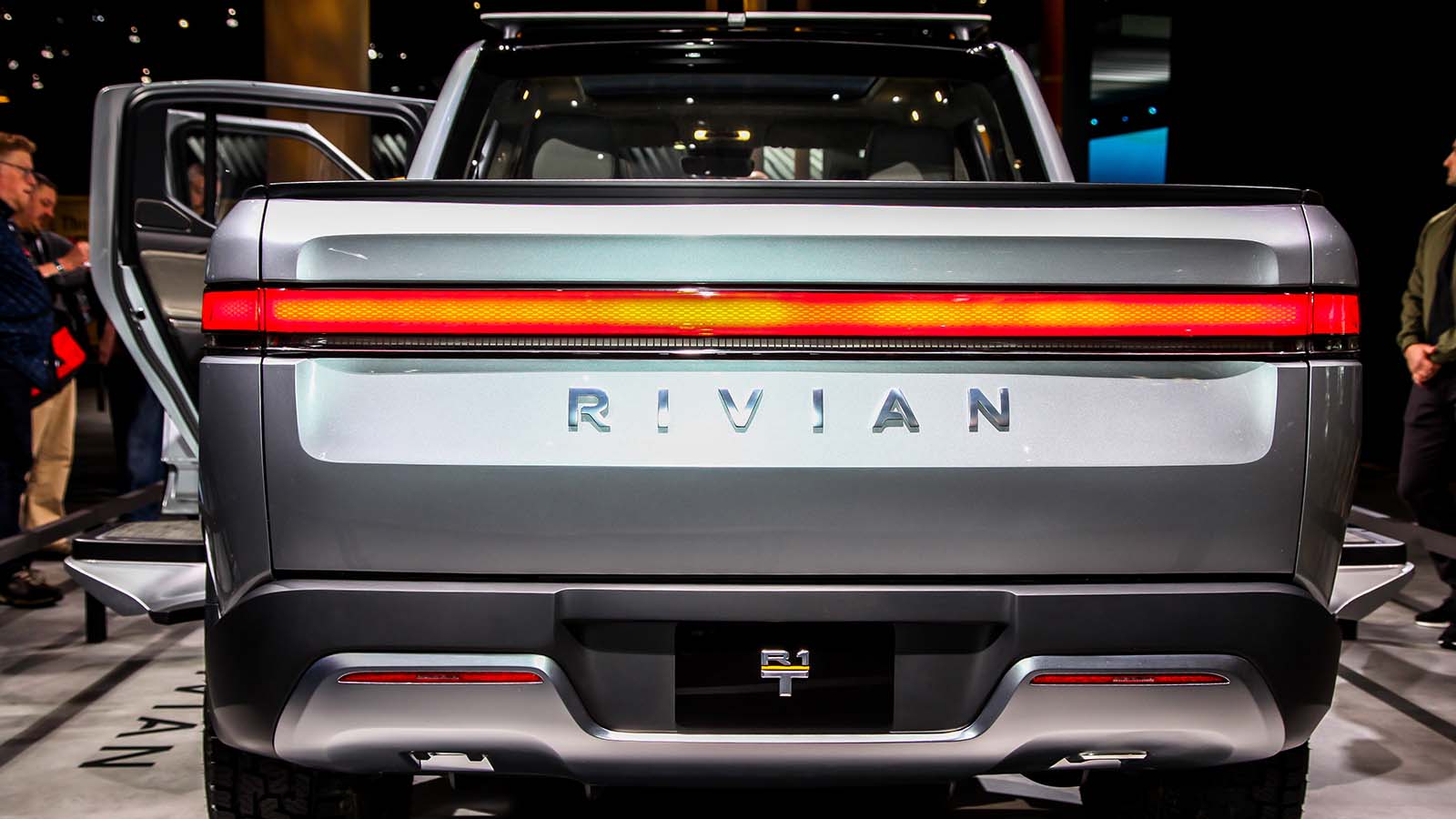Rivian (NASDAQ:RIVN) recently hit new lows on Dec. 17 after reporting earnings. RIVN stock fell 10% as a result of a top- and bottom-line miss, the company’s first report as a public company.

Even with the drop, Rivian commands a market capitalization of $84 billion. That’s more than Ford (NYSE:F) and General Motors (NYSE:GM). That’s crazy!
The valuation with electric vehicle (EV) stocks has gone bananas.
In the pre-EV days, automakers were assigned insultingly low valuations. Perhaps we’re in the midst of a great “rerating” in terms of valuation, but building EVs vs. traditional internal combustion engine (ICE) vehicles shouldn’t create such disparity with the valuation.
That’s where we find ourselves though, as investors wonder if this shift is permanent or temporary.
I don’t have anything personal against RIVN stock, but I personally find its valuation to be too high. Shares trade at about 10.4 times 2023 estimates, estimates of which may very well may be too optimistic in the first place.
That’s got me comparing it to other automakers, namely Ford.
RIVN Stock vs. F Stock
Rivian does not generate meaningful revenue at the moment, although it does have a partnership with Amazon (NASDAQ:AMZN). The latter also owns a 20% stake in the company, for what it’s worth.
Estimates currently call for $3.45 billion in sales next year for Rivian, although that estimate is at risk (in my opinion) as management has said supply chain issues could negatively impact deliveries. On the plus side, there are 71,000 RI reservations for its new vehicle. That’s up 48% in the last two and a half months.
But then you flip around to Ford and ask yourself, “If Rivian is worth $84 billion, why is Ford only worth $80 billion?”
The company is forecast to generate ~$127 billion in sales in 2021, up 9.5% year over year. In 2022 and 2023, estimates sit at $145.3 billion and $164 billion, respectively.
The latter figure is almost 20 times larger than the $8.4 billion Rivian is forecast to generate that year. Now that comparison is a bit like apples to oranges, but it highlights the difference between these two companies and what stage they are at.
Rivian is like the kid that walked into the office and was promoted to VP on their first day. Ford has been there for 30 years and still can’t make partner.
Truck vs. Truck
Ford is making a serious transition toward EVs. It already has its Mustang Mach E on the road, with the E-Transit on the way. Ford even has a pilot program to help companies integrate the E-Transit into their fleets.
But the crown jewel is the F-150 Lightning.
The F-Series pickup truck is the best selling vehicle in the U.S. and has been for more than four decades. While Rivian has an impressive 71,000 reservations, Ford stopped taking reservations for its F-150 Lightning, as the list topped 200,000.
Demand is clearly through the roof here. While that has many investors optimistic on the future of EV and specifically on Rivian, why don’t they see the competition that’s coming down the pike?
It would be one thing if Rivian was going to enter the electric pickup truck market with no competition. But the fact that it’s fighting the electrification of the country’s best-selling pickup and vehicle, and going up against Tesla (NASDAQ:TSLA), GM and others, should have investors asking some questions.
Namely this: Is RIVN stock overvalued or is F stock undervalued — or is it both?
Granted, the R1T has a better EPA-estimated driving range for its base model than the base model for Ford’s Lightning. That said, Ford’s electric pickup starts at around $40,000 and can get an upgrade to its range, while the R1T has a starting price of roughly $67,500.
Ford expects to “increase its production capacity of electric vehicles to 600,000 units globally by 2023.” Further, CEO Jim Farley “expects that would make the company the second-largest U.S.-based producer of EVs,” just behind Tesla (NASDAQ:TSLA).
For what it’s worth, General Motors will likely be in that mix as well, with management previously stating it expects to produce 1 million EVs by 2025.
Bottom Line on RIVN Stock
I must repeat again that I don’t have anything personal against Rivian. I actually really like EVs and autonomous driving systems and I covered the space for years.
But the sudden fascination with this industry — shown via the valuations — has me asking some questions as to how it’s justified. For now, I still don’t have the answer and, between the two stocks, I’d rather be long Ford at these levels than RIVN stock.
On the date of publication, Bret Kenwell did not have (either directly or indirectly) any positions in the securities mentioned in this article. The opinions expressed in this article are those of the writer, subject to the InvestorPlace.com Publishing Guidelines.
Bret Kenwell is the manager and author of Future Blue Chips and is on Twitter @BretKenwell.
